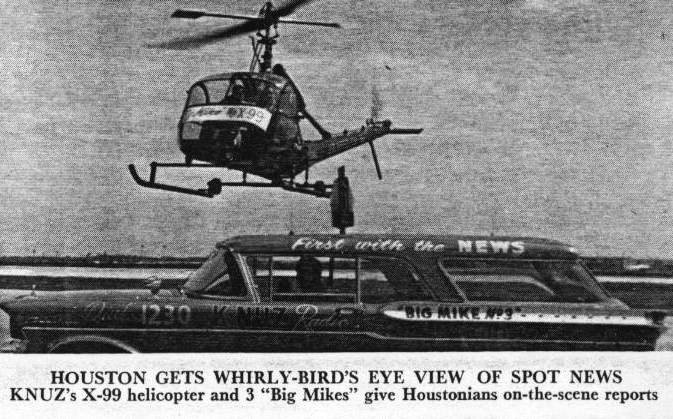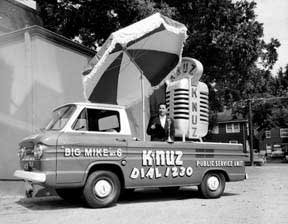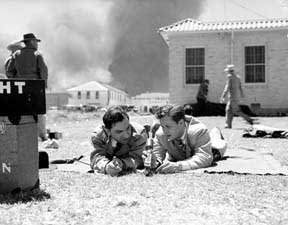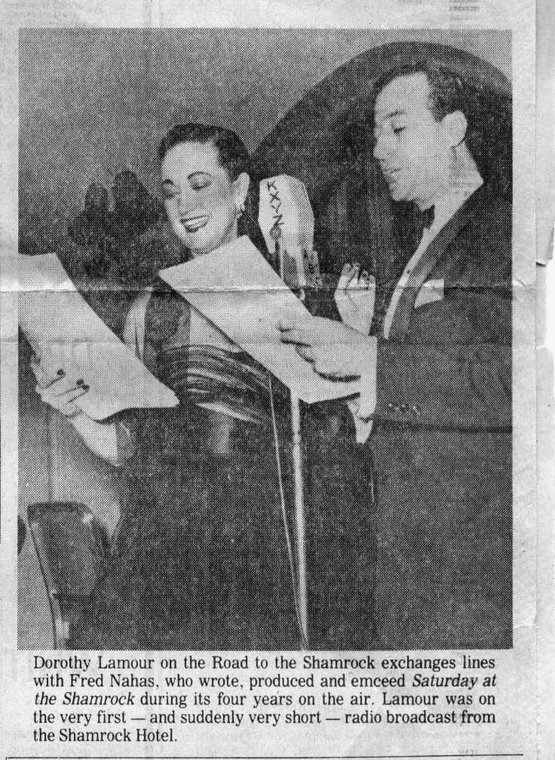This article has been edited 5/3/2014 to reflect new information about the earliest broadcasts of KFUL which were wrongly attributed by the Galveston Daily News to KFLX.
The Radio Service Bulletin published by the Commerce Department on January 2, 1925, listed KFUL, Galveston, as a new station. Licensed to Thomas Goggan and Brothers Music Co., KFUL was authorized on 288 meters, 1160 kilocycles, with 10 watts. Goggans had a big store in the 2100 block of Market Street which housed the station, apparently on the third floor next to a workshop. The firm had been founded in Galveston in the late 1800s and had branches all over the state at one time including a store in downtown Houston. It was considered the largest and oldest musical firm in Texas, supplying sheet music and instruments of all kinds. For more on Goggans, go here.
The earliest mentions of the station's broadcasts in the Galveston Daily News erroneously attributed the broadcasts to George Roy Clough's KFLX but all of the stories mentioned Goggan's and station manager J.R. Davis. The error is emphasized even more by the fact that though KFLX had been licensed a year earlier it had never been mentioned in the paper up until that time and wouldn't be mentioned again by name until 1929.
The first mention on Sunday, November 23, 1924, reported on a concert by St. Mary's Cathedral Choir which was scheduled to start at 9 pm instead of 8 pm which would, it was asserted, eliminate much of the static problems experience on a previous broadcast. And the article reveals that even from its inception the station was seen as a promotional vehicle for the island. The story began ''The air will again be the medium of advertising the 'Treasure Island' Wednesday night..." The paper reported 'many notices of congratulations' were received on the new station from as far east as Cleveland, OH, and stated that concerts would continue on a weekly basis until demand built up. Another story on the 26th reminded readers that another concert was scheduled that evening, mentioned an earlier broadcast on November 19 and reported that more than 300 phones calls had now been received about the previous broadcasts.
One more article with the erroneous calls was published on the 2nd of December and cited letters received from Eugene, OR, Edmonton, Alberta, Canada and Banes, Oriente, Cuba. The last letter reported receiving a broadcast on November 11, with loudspeakers set up so many could listen so the first broadcast of the station was at least that early.

The first mention of the station by its correct calls in the
Galveston Daily News appeared on the 18th of December, 1924.
The first Goggan’s ad mentioning the station appeared in the
News on the 8th of January, 1925.
In its first few months of operation, the station featured many local performers and civic clubs including the Chop Suey Entertainers, The Tokio Royal Orchestra, George McQueen, Miss Bobby Rowling, a cabaret singer formerly of New Orleans, the Lions Club, the Schubert Glee Club of San Jacinto School, the Knights of Columbus, the Sons of Hermann Orchestra, and the 9th Infantry Band from Fort Crockett, plus several visiting artists, including a talk delivered by a visiting skating champ. Reports in the paper following broadcasts always boasted about the number of calls received, especially if they were out of town. The badly over-inked picture of the Tokio Royal Orchestra in the studio was published in the
News on April 25, 1925.
In April a new head of the radio department at Goggan’s was named who would also be in charge of the station. According to the original announcement his name was Ray Clough but he was subsequently referred to as George Roy Clough, none other than the owner of
KFLX, Galveston’s other licensed radio station at that time.
In June a deal was announced with the Galveston Playhouse Corporation to move the station to the Garden of Tokio which was apparently on the beach and operate there for the summer, as well as boost power to 100 watts. It was asserted the increased power would provide coverage for a range of 500 miles in the summertime and all of the US in winter. This would help to publicize Galveston as the ‘Port and Playground of the Southwest.’ J. E. Stratford of the Playhouse asserted ‘practically every well known beach in the country is now advertising itself by means of the radio.’ The
Radio Service Bulletin published August 1 did report that
KFUL had been authorized to boost power to 50 watts.
The issue of the station’s ability to serve as a promotional vehicle for the island came to the fore again in February, 1926, when a proposal was floated before the Galveston Ad Club to undertake a public subscription drive to raise $8,500 to enable Goggan’s to enlarge and improve the facilities and boost power to 500 watts. The Ad Club declared itself in favor of the idea, which was to be presented next to the Chamber of Commerce. Five hundred dollars was raised in a very short time and it was said the entire amount was expected to be raised in 50 to 60 days. Mentions of the station’s broadcasts in the paper regularly included mentions of the fund drive with exhortations to those who had made pledges to send in their money. By the end of the month it was stated that an outside announcer would be hired to be the principle announcer on the station, someone not connected to Goggan’s, and a central committee would be appointed to be in charge of station activities while George Roy Clough would remain in charge of the ‘operating room.’ Pledges of support for the drive were said to have been received from Colorado, Nebraska, Indiana, Florida, Virginia, South Carolina and Georgia.
The fund drive took longer than anticipated and fell short of the goal but improvements were undertaken anyway. By August, 1926, it was announced $4000 had already been spent and another $2000 was needed within a month. Then in early December it was announced the ‘new’ station would open on Friday, December 17, tests of the new equipment having proved satisfactory.
On the seventeenth a feature story proclaimed the inaugural broadcast of ‘The Community Broadcasting Station of the Gateway to the Southwest’ with an inaugural celebratory broadcast lasting all night long. The new facilities had been built at a minimum of expense. George Roy Clough had built the equipment which, it was claimed, would have cost $25,000 otherwise. The fund drive had raised $3615; Goggan’s had spent $2000 on parts and labor and another $1599 to furnish a new studio and reception room. Test broadcasts had drawn letters from all over the continent and a cablegram from Midway Island in the Pacific, estimated to be 8000 miles away. The story said more funds were still needed and emphasized nearly every civic organization on the island had endorsed the drive.
A follow-up story a couple of weeks later reported that letters had been received from every state and almost all the Canadian provinces as well as Mexico. ‘Well over’ 3000 cards, letters and telegrams were being answered by the Chamber of Commerce which was sending out advertising materials, indexing the addresses and creating a big wall map. The story also emphasized the station was still in need of funds to bring the power up the the contemplated wattage. Frank B Herrle or Herrie was appointed musical director of the station and a big open house was planned for the end of January during which visitors would be able to observe programs being broadcast.
Records of government actions in that era are available only through the
Radio Service Bulletins issued monthly which do not show that
KFUL received authorization for the contemplated power boost for the ‘new’ station. It was not until April of 1927 that temporary authority was granted, efffective May 3 of that year, for Goggan’s to boost the station’s output to 750 watts, pending final approval. Then in July, 1929, permission was granted for the station to operate with 1000 watts daytime on an experimental basis with 500 watts nighttime, but by November of that year the authorizations had been reduced to 500 watts which was apparently the wattage the station operated with until it went off the air in 1933.
Continue to Part 2.
Images above from the archives of the Galveston Daily News on newspapers.com.

















